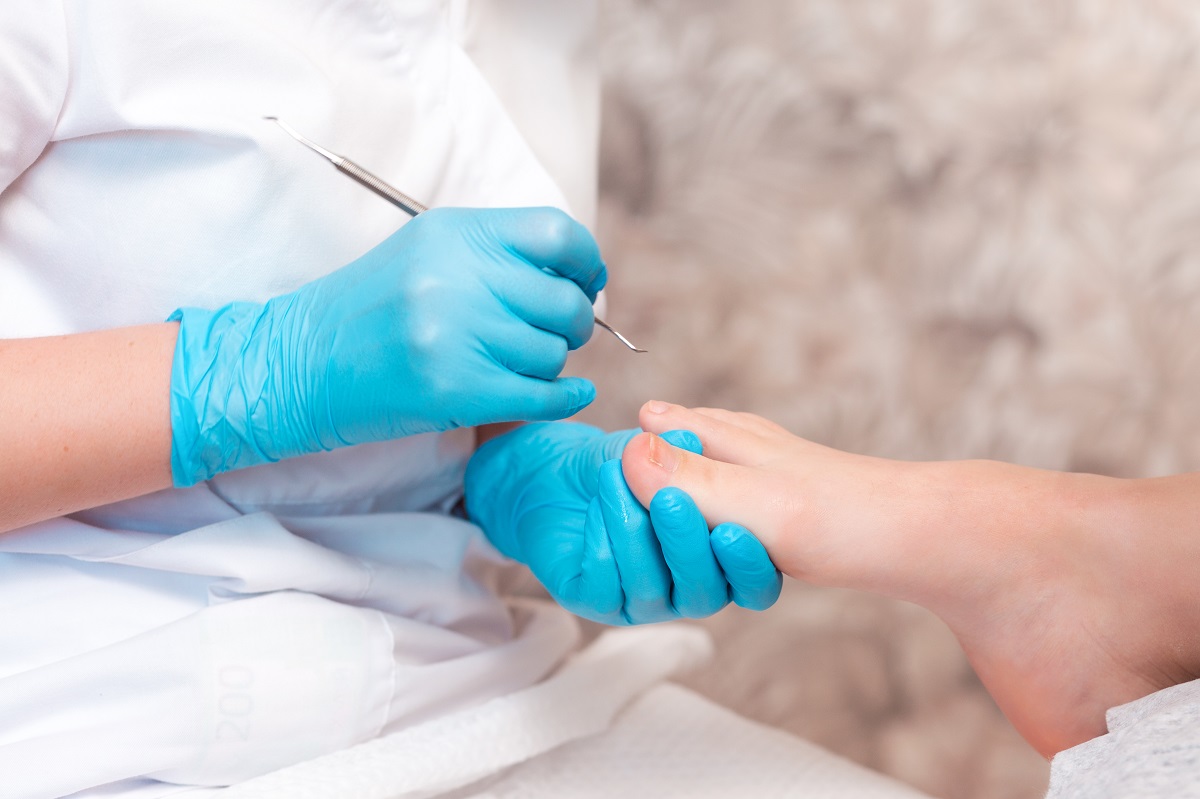What are Ingrown Toenails?
Ingrown toenails are a common condition that occurs when your nails’ edges grow into the skin next to them instead of over it. The result is redness, swelling, pain, and even infection. It commonly occurs in people with sweaty feet and thicker toenails, but there are several other causes.
Why do they happen?
Some causes of ingrown toenails include:
- Pressure on the toes by socks, stockings, or shoes that are too tight
- Not keeping your feet clean and dry
- Cutting the sides of your nails at an angle
- Cutting your nails too short
- Poor posture and physical activities such as football, soccer, and ballet that stress your feet
- Unusually curved toenails
- Injury on your toenails from jamming or stubbing
- Genetic susceptibility
What are the symptoms of an ingrown toenail?
Ingrown nail symptoms occur in stages. At first, you may notice:
- Pain on the skin next to the nails
- Swelling around the toe
If your ingrown toenail becomes infected, symptoms may include;
- Bleeding or oozing pus
- Warmth in the affected area
- Throbbing pain
- Foul odor
How are ingrown toenails treated?
At Home:
You can easily manage ingrown toenails that are not yet infected at home. To treat them, you can:
- Soak your feet for about 15-20 minutes three to four times a day to reduce swelling and tenderness, keeping them dry for the rest of the time.
- Place a small piece of cotton wool or dental floss soaked in alcohol under the edge of the toenail to help it grow away from the skin.
- Wear open-toed, loose, and comfortable shoes.
- Apply antibiotic cream such as a steroid cream and cover the toe with a bandage to prevent infection.
- Take over-the-counter pain relievers such as acetaminophen.
In the Doctor’s Office:
If you try home remedies for some days, but the pain worsens, you may need to see a doctor. It means that your toe could be infected, and it needs medical attention. Some signs of infection to look out for include warmth, pus, throbbing pain, foul odor, and blood.
Your primary caregiver will most likely diagnose your toe with a physical exam. If it seems infected, you may need an x-ray to show how far the nail has gone into the skin. There are various treatment options that the doctor can go with:
Partial nail removal
The doctor may remove the part of your nail that is growing into the skin. This procedure is 98% effective in preventing future ingrowths. He/she will surgically cut the sides of the nail, then place a piece of cotton wool under the remaining portion to keep it from growing into the skin. Your doctor may also use a compound called phenol, which keeps the cut sides from growing back.
Total nail removal (matrixectomy)
If an ingrown nail keeps recurring or is caused by thickening, the doctor may surgically remove your whole nail.
How is recovery?
You will need to keep your feet raised for one or two days. Wear comfortable footwear, and avoid movements as much as you can. The doctor will prescribe some painkillers and antibiotics to prevent infection.
You can take off the bandage two days after surgery, then after that, soak the affected foot in saltwater daily until your toe heals.
After partial nail removal, your toe may take a few months to grow back. If your nail is entirely removed, it can even take more than a year to grow back.
What are the possible complications?
If you have diabetes, infections can be more severe due to poor blood flow. You should see a doctor immediately if you notice an ingrown toenail. If you are genetically exposed to ingrown nails, and infections keep recurring, you should consider a full matrixectomy to help you lead a normal life.
If an ingrown toenail is left untreated, it can lead to;
- Foot ulcers
- Tissue decay (gangrene)
- Bone infection
How can you prevent ingrown toenails?
To prevent ingrown toenails;
- Keep your nails at a moderate length. Do not cut them past the tip of the toe, as pressure from your shoes may direct the nail to grow into the skin.
- Examine your feet regularly. If you find any signs of an ingrown toenail, visit a medical provider, especially if you have diabetes.
- Do not curve your nails as you trim them; keep them straight across.
- Wear properly fitting shoes, pantyhose, and socks.
- Wear protective footwear such as steel-toed boots if you work in hazardous conditions.
People of all ages experience ingrown toenails, but it is a condition that can be prevented and easily treated. However, patients with diabetes or any other condition that causes poor blood flow to the feet are at a bigger risk of complications and should seek medical attention as soon as the symptoms start occurring.
At Riverside Health, we're dedicated to compassionate, collaborative care. We provide a wide range of services, from childbirth to end-of-life care, delivering over 2 million services each year. Our integrated network allows us to support you seamlessly through health, illness, recovery, and wellness. With top clinicians and advanced technology, we’re here for you at convenient locations close to home and work. Visit riversideonline.com.
If you’re wondering where the best place is to get care, please see our guide below:
If your problem is life- or limb-threatening, call 911 or go to the emergency room.
Primary Care – Schedule through MyChart or call your provider’s office who you go to for most health care needs.
Virtual Clinic – Schedule through MyChart or click Here to learn more about Primary Care On Demand.
MD Express Urgent Care – Click Here to find a location near you for after-hours care or when your primary care provider is busy.
If you’re not sure, call Riverside Nurse 24/7 at 1-800-675-6368



